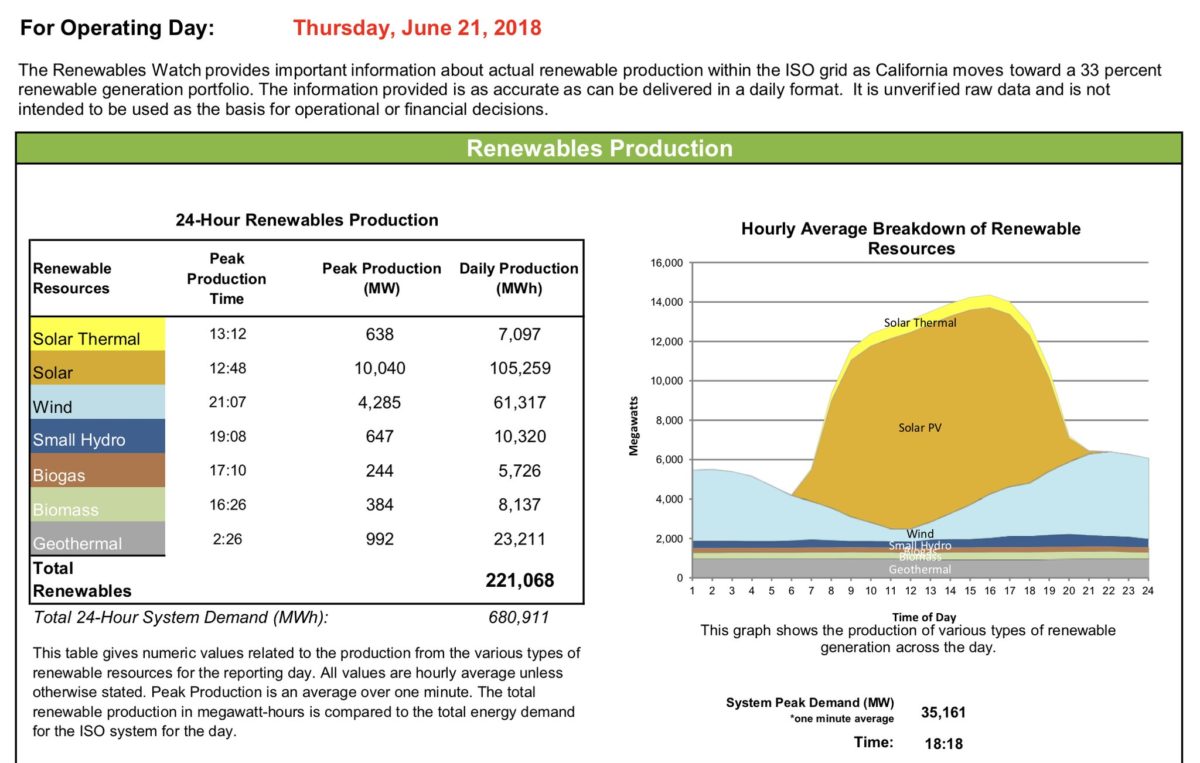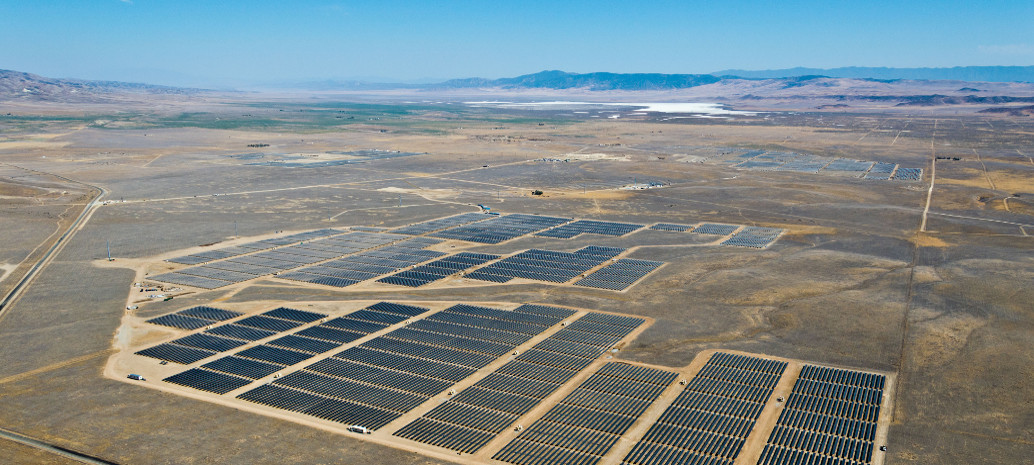First, you must be California – the 31st state to join the United States that just so happens to be the league leader in total solar power deployed by a long shot. Then, you mix in one part ‘no clouds’ over the entirety of the southwestern United States.
Not a cloud in the sky in California, Arizona and Nevada on the longest day of the year. You know what that means for #solar… @California_ISO @adambrowning @SEIA @CALSSA_org pic.twitter.com/skZVqaFdUH
— Ben Paulos (@BenPaulos) June 21, 2018
And lastly you toss in a healthy amount of June 21, the summer solstice in the northern hemisphere on earth, offering up the most amount of daylight for the year!

Per the California Independent System Operator (CAISO), and per tweets supplied by Joe Deely, on Thursday June 21st, large-scale solar power (PV and CSP/solar thermal) set a generation record for the day of 112,356 MWh. This is equivalent to 16% of all electricity consumed during the day.
This record is seperate from two other records – 1. instantaneous solar generation record – 10,539 MW at 1:40 PM on April 27, 2018 and 2. peak percentage of demand served by solar – 49.95% at 12:58 PM on March 4, 2018.
For all three of these records, the numbers do not actually do justice to the full output of solar in the state, as CAISO does not have any visibility into solar power located at homes and businesses located behind a customer’s meter. This means that the peak of 10.5 GW doesn’t account for as much as 6.5 GW of additional power being generated. And the percent demand served by solar increases as well when considered the significant electricity usage offset before the meter is even used.
Even though grid operators in the United States typically do not include behind-the-meter solar power, the U.S. Department of Energy’s Energy Information Administration (EIA) has begun including estimates of such generation, which can be found in Electric Power Monthly and other publications.
Additionally, states like Hawaii and California are at the forefront of developing the ability to make better use of this electricity as it is having a significant effect on the power grid – like $2.6 billion in grid upgrades put off by distributed generation and efficiency.
This content is protected by copyright and may not be reused. If you want to cooperate with us and would like to reuse some of our content, please contact: editors@pv-magazine.com.









By submitting this form you agree to pv magazine using your data for the purposes of publishing your comment.
Your personal data will only be disclosed or otherwise transmitted to third parties for the purposes of spam filtering or if this is necessary for technical maintenance of the website. Any other transfer to third parties will not take place unless this is justified on the basis of applicable data protection regulations or if pv magazine is legally obliged to do so.
You may revoke this consent at any time with effect for the future, in which case your personal data will be deleted immediately. Otherwise, your data will be deleted if pv magazine has processed your request or the purpose of data storage is fulfilled.
Further information on data privacy can be found in our Data Protection Policy.